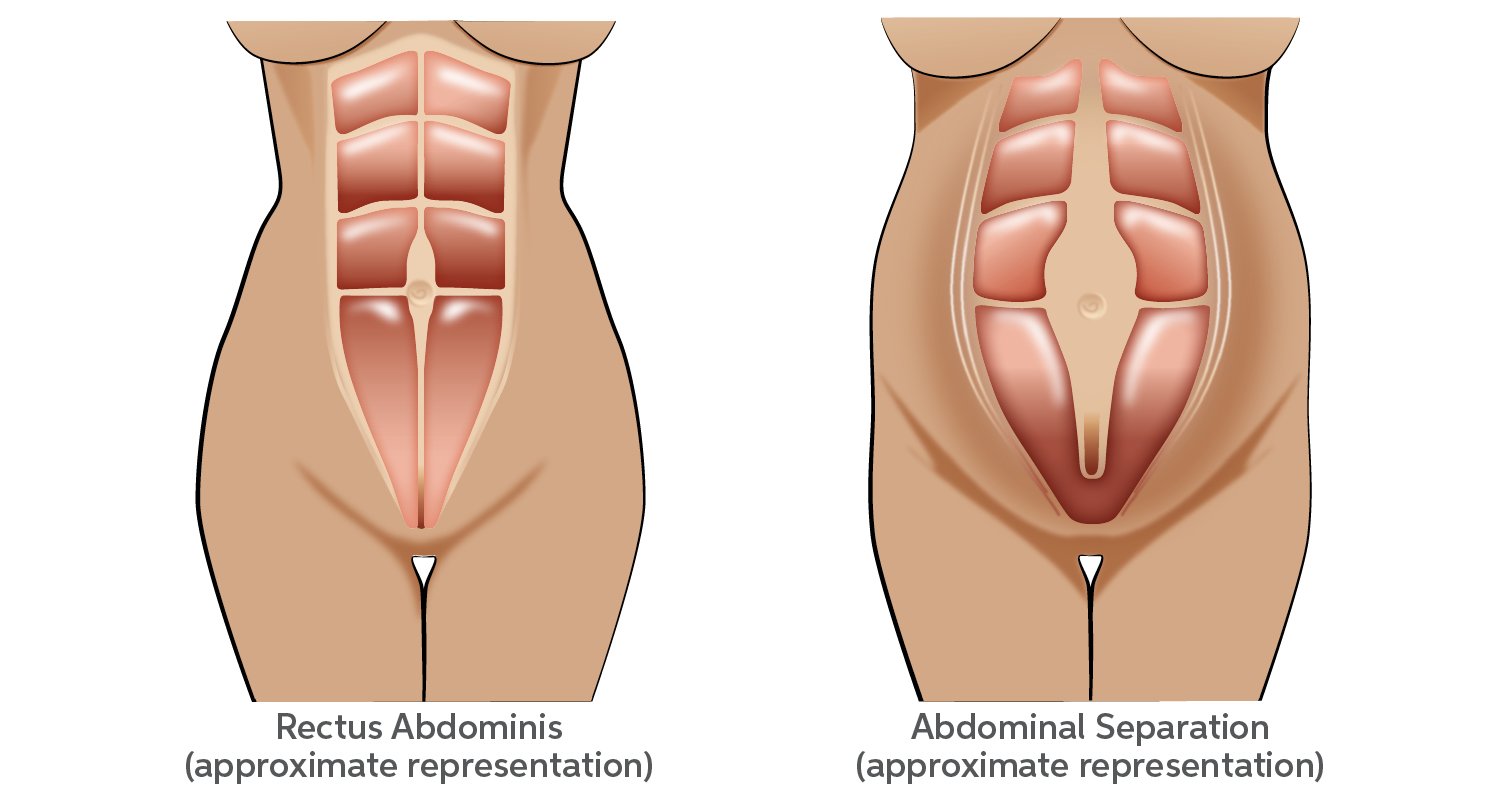Did You Know that there are two types of abdominal separations? A Diastasis Recti (DR), is a healthy, naturally occurring one.
There is a lot of confusing and misleading information about Diastasis Recti. Many women feel disillusioned, demoralized and even stressed about their midline after and during pregnancy.
Keep reading if you are one of these people. Let’s take a closer look at Diastasis Recti.
Words matter
“Diastasis” means separation.
“Recti ” refers to rectus abdominis (aka the 6-pack muscles).
“Functional Diastasis Recti”:
- Pregnancy: A healthy and naturally occurring separation of the abs due to the thinning and widening the linea alba. The core is functional.
- Postpartum: The linea alba can transfer tension along the midline of the ab.
“Dysfunctional Diastasis Recti”:
This is the most common way to refer to Diastasis Recti. This is a core dysfunction or condition.
- It is part of an abdominal separation that naturally occurs during pregnancy.
- Postpartum: The linea alba is weak and unable to transfer tension along its midline. This is often characterized as a protruding, rounded belly.
- Instability, mechanical control and strength of core muscles is reduced, which can lead to dysfunction (low back or pelvic pain, pelvic floor issues, pelvic floor issues, bloating ).
Whether Diastasis Recti is necessary or not, every mother must rehab her core after having a baby.
It is best to begin healing your core within the first 8 weeks following delivery.
This window is more likely for separation to heal naturally.




